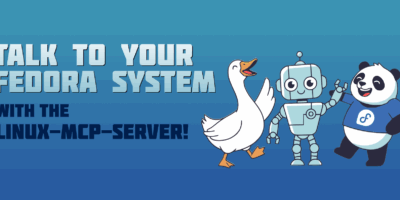MPD, as the name implies, is a Music Playing Daemon. It can play music but, being a daemon, any piece of software can interface with it and play sounds, including some CLI clients.
One of them is called ncmpcpp, which is an improvement over the pre-existing ncmpc tool. The name change doesn’t have much to do with the language they’re written in: they’re both C++, but ncmpcpp is called that because it’s the NCurses Music Playing Client Plus Plus.
Installing MPD and ncmpcpp
The ncmpmpcc client can be installed from the official Fedora repositories with DNF directly with
$ sudo dnf install ncmpcpp
On the other hand, MPD has to be installed from the RPMFusion free repositories, which you can enable, as per the official installation instructions, by running
$ sudo dnf install https://download1.rpmfusion.org/free/fedora/rpmfusion-free-release-$(rpm -E %fedora).noarch.rpm
and then you can install MPD by running
$ sudo dnf install mpd
Configuring and Starting MPD
The most painless way to set up MPD is to run it as a regular user. The default is to run it as the dedicated mpd user, but that causes all sorts of issues with permissions.
Before we can run it, we need to create a local config file that will allow it to run as a regular user.
To do that, create a subdirectory called mpd in ~/.config:
$ mkdir ~/.config/mpd
copy the default config file into this directory:
$ cp /etc/mpd.conf ~/.config/mpd
and then edit it with a text editor like vim, nano or gedit:
$ nano ~/.config/mpd/mpd.conf
I recommend you read through all of it to check if there’s anything you need to do, but for most setups you can delete everything and just leave the following:
db_file "~/.config/mpd/mpd.db" log_file "syslog"
At this point you should be able to just run
$ mpd
with no errors, which will start the MPD daemon in the background.
Using ncmpcpp
Simply run
$ ncmpcpp
and you’ll see a ncurses-powered graphical user interface in your terminal.
Press 4 and you should see your local music library, be able to change the selection using the arrow keys and press Enter to play a song.
Doing this multiple times will create a playlist, which allows you to move to the next track using the > button (not the right arrow, the > closing angle bracket character) and go back to the previous track with <. The + and – buttons increase and decrease volume. The Q button quits ncmpcpp but it doesn’t stop the music. You can play and pause with P.
You can see the current playlist by pressing the 1 button (this is the default view). From this view you can press i to look at the information (tags) about the current song. You can change the tags of the currently playing (or paused) song by pressing 6.
Pressing the \ button will add (or remove) an informative panel at the top of the view. In the top left, you should see something that looks like this:
[------]
Pressing the r, z, y, R, x buttons will respectively toggle the repeat, random, single, consume and crossfade playback modes and will replace one of the – characters in that little indicator to the initial of the selected mode.
Pressing the F1 button will display some help text, which contains a list of keybindings, so there’s no need to write a complete list here. So now go on, be geeky, and play all your music from your terminal!






Paul
Thanks, I’ll give it a try, still prefer MOC for music on console 🙂
Foo
Cmus is the best player.
Andy Mender
I second this :).
Jonny
Cmus was my go to player before I switched full time to mpd / ncmpcpp. Never looked back because life has just been easier….
dac.override
Long time user of mpc and ncmpc here. I recently rediscovered Emacs mpc major mode. This thing takes a bit of getting used to but I currently prefer it because you get a good oversight of your music collection. I often search for tunes based on genre, and I never really got used to doing that with ncmpc. With emacs all the available genres are in plain sight and easy to peruse.
homme
:coffee:
webpage
I am in fact pleased to read this webpage posts which includes
plenty of useful information, thanks for providing such statistics.
erte
How playing i tmux?
with resize for setup and small icon ot in window no see anything?